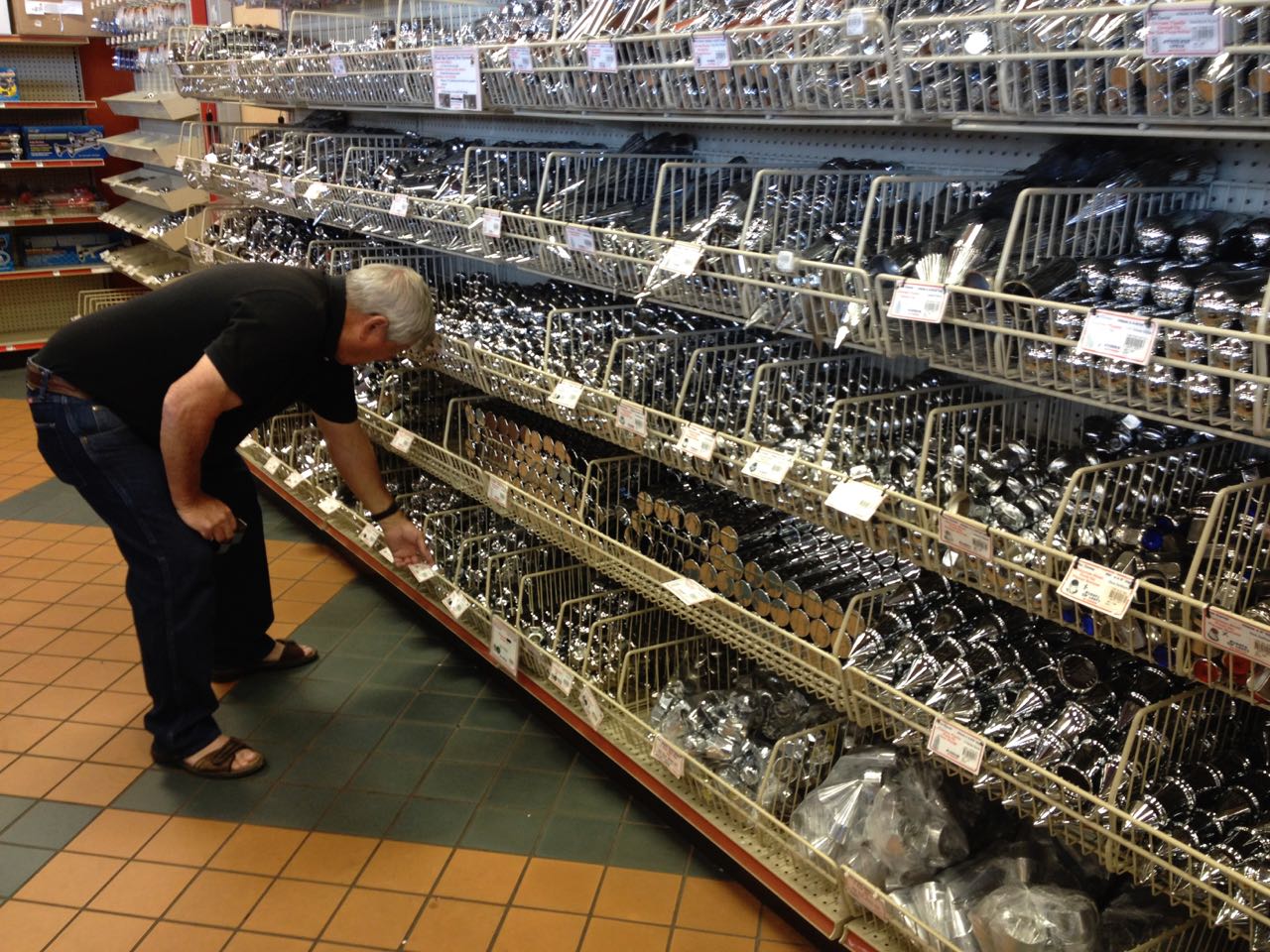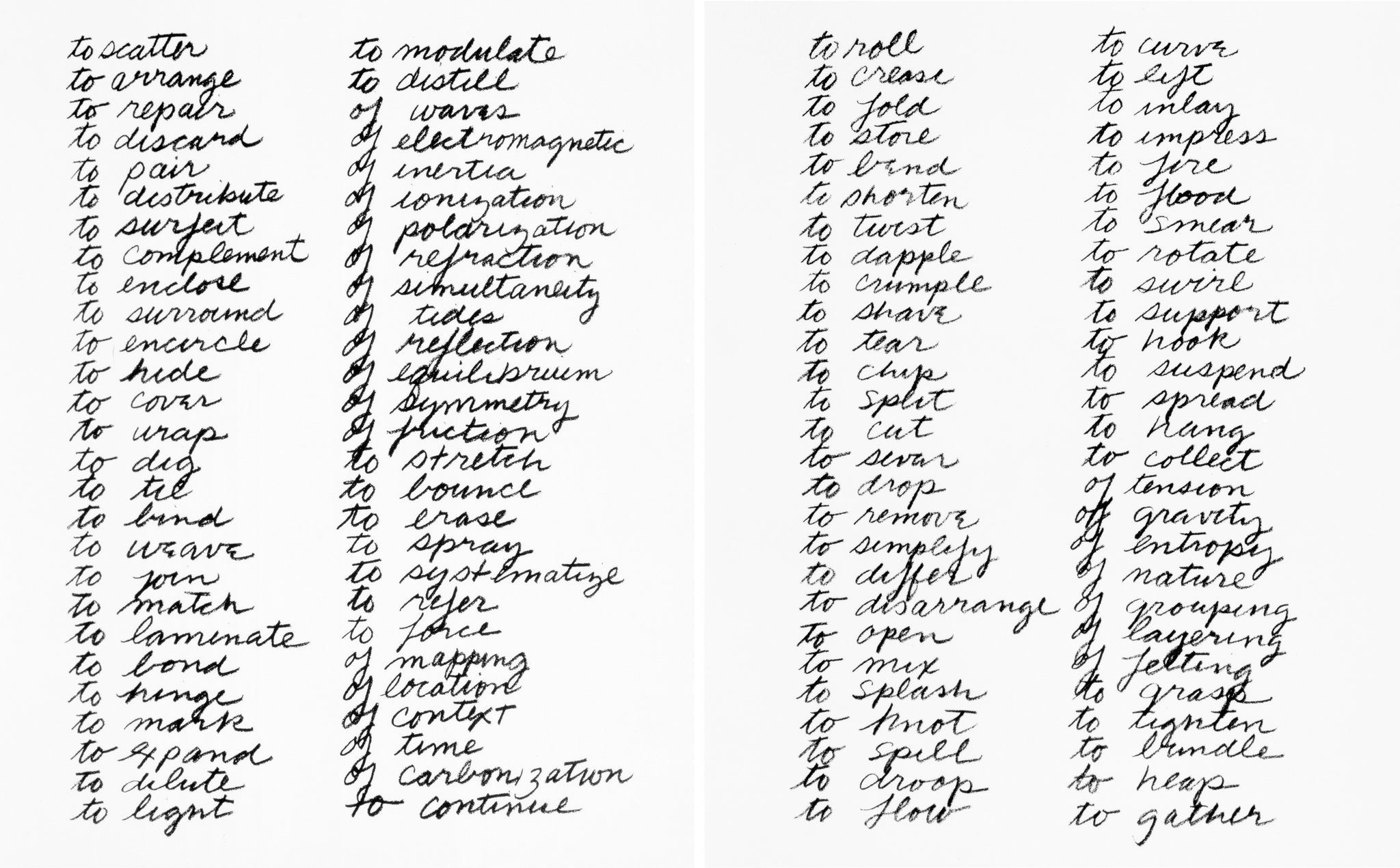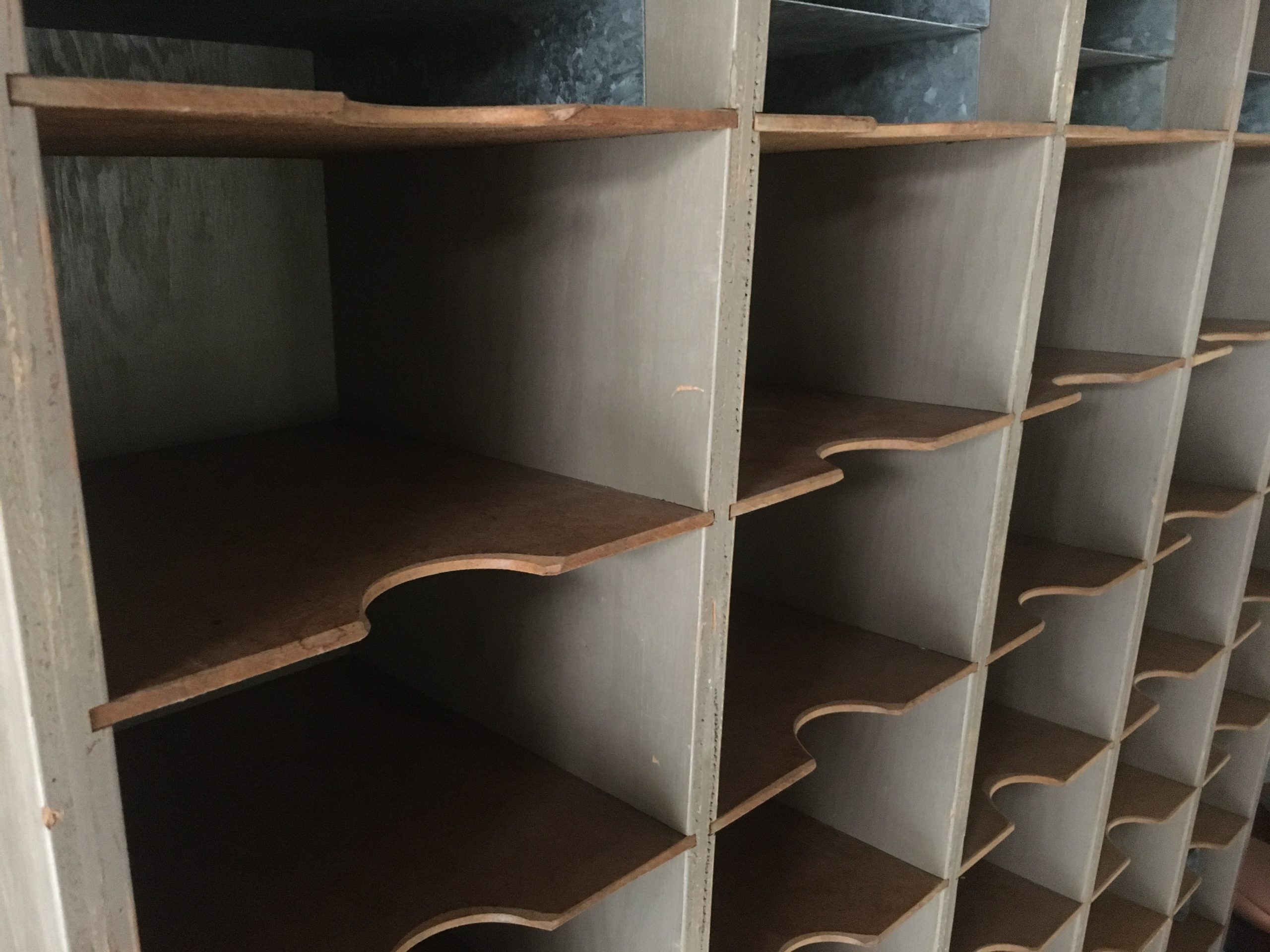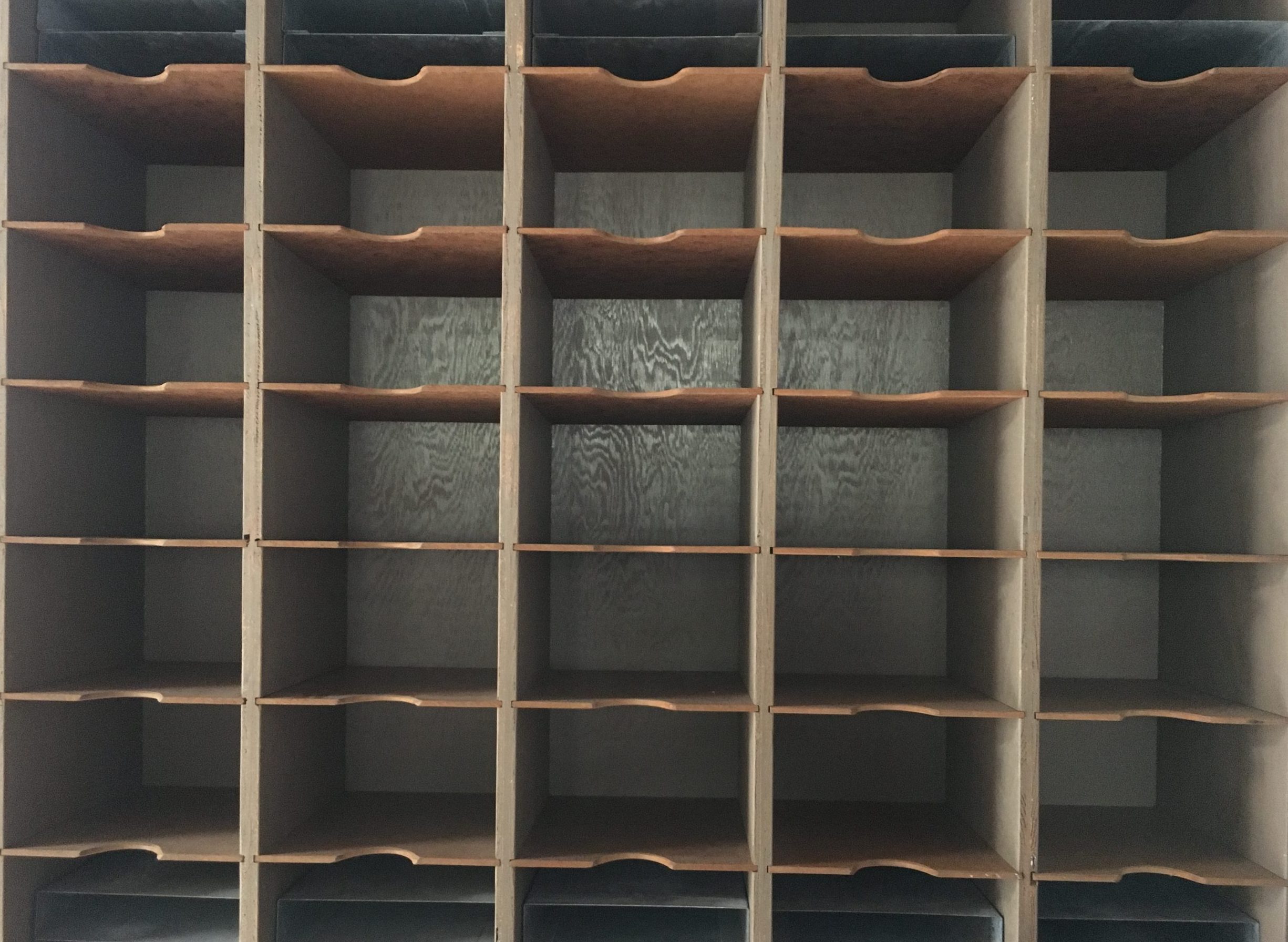Tool categories for the untrained
I was working as a junk hauler when I took on the full-scale renovation of a 100-year-old house that had been vacant and squatted for several years.
There were holes in every wall, graffiti everywhere, non-working plumbing and electrical hazards. The house needed everything. And I didn’t know the first thing about building and construction. But I had access to a steady stream of discarded tools and materials from construction sites, garage cleanouts, and other hauling jobs, which I started collecting to use in the project. I remembered enough of the basics from shop class to know what certain tools were, but I didn’t know how to use hardly any of them.
The organizational system I used to store these things became a kind of running joke of the project, which soon involved the help of some friends and contractors who agreed to work collaboratively, teaching me as they went. It was the way I categorized my tools that everyone noticed. Each tool had a place in a series of crates on shelving in the central room of the house. Scrawled with a sharpie on masking tape was a label for each section:
- Marking & Measuring
- Safety & Comfort
- Bits & pieces
- Taking Things Apart, which included the subcategories:
- Cutting & Slicing
- Sanding & Grinding
- Pounding & Drilling
- Putting Things Together, which included the subcategories:
- Adhesives & tape
- Rope, wire, & cable
- Fasteners
- Painting and staining
- Cleaning1
Looking back, it doesn’t seem that strange to me. I know how to get by with many of those tools now, though I’m no expert. But I still think of them in those same basic categories. They made sense, and maybe still make sense, for someone who doesn’t know exactly how everything is supposed to be used. And there’s a certain logic to starting with Measuring and ending with Cleaning. To contain a diverse array of objects, the categorical scheme uses a certain abstraction—one which has a childlike naivete that you might even call charming.
And some did. A specialized contractor like an electrician may have trouble fitting what they do into my categories. But some of them, if they were onsite for long enough, would eventually learn it, taking things and putting them back in their boxes without asking me. I even recall getting a compliment or two—though not without a slightly patronizing tone.
Say what you will about the tool storage categories of a home renovating novice. The point is this: whenever someone asked me for a tool, I knew exactly where it was. Though something may seem a little wrong with them, my categories were right for me. Yours might make sense for you, but not for me. And that’s fine—as long as you can find what you need.
Think of pushing a cart down the aisle of a warehouse with large labels hanging from the ceiling and pointing the way to a different set of categories

The point is to have some kind of system. Our systems may not even be legible to each other, or even to ourselves, as systems. (Even the lack of a system can have a kind of systematicity.) There’s what we do, and alongside it, always—how we think about what we do. The mental boxes we put things in.
If I can propose a rough categorization that divides what we do into two big boxes, maybe it would be that so much of what we do aspires to some variation on the two top-level categories of that simple tool storage: 1) Putting Things Together, or 2) Taking Things Apart.2 The act of categorizing, of thinking about what we do in relation to everything else we do—seems to accomplish a little of both.
Maybe it’s hard to locate something specific when it’s crammed in together with other things in such large boxes. And maybe there are things that fit equally in both. The categories break down, like the distinction above between what we do and how we think about it. In some of the most gratifying activities, we may experience no distinction between thought and deed, whereas in some of the most despicable actions we may experience a wide chasm between the act and its justification. The boxes themselves are only a tool, and in the end, here is no hard rule here, no overarching system.
The “Big Box” Categories of Home Improvement
Contrast my novice categories with those of a typical American hardware store or home improvement mega-store.
- Appliances
- Bath & Faucets
- Blinds & Window Treatment
- Building Materials
- Cleaning
- Decor & Furniture
- Doors & Windows
- Electrical
- Flooring & Area Rugs
- Hardware
- Heating & Cooling
- Kitchen & Kitchenware
- Lawn & Garden
- Lighting & Ceiling Fans
- Outdoor Living & Patio
- Paint
- Plumbing
- Smart Home
- Storage & Organization
- Tools3
Of course, shoppers need to find what they’re looking for, and these tool categories seem to solve certain practical needs of organizing products in physical space. They also seem to be tailored to the needs of one specific industry: housing construction. (Which is itself just the most visible part of the massive “FIRE” sector comprising the related Finance, Insurance, and Real Estate industries.) But in a subtle way, there’s something more being communicated here.
One thing that immediately stands out is the number of nouns in this list. Using the names for tools or parts of a house tends to assume one knows something about the thing to begin with, or in what place it should be used, rather than using verbs and action words to describe what a thing can do, without specifying where it should be applied. Using the tools in my list seems to be able to produce any kind of dwelling one can imagine, but using the tools in the store’s list—the same tools—seems to be destined to produce a very specific kind of home. And that home represents a very specific idea of “improvement.” There seems to be some hidden assumptions.

Theorists in the fields of sociology and pedagogy have long pointed out the ways that the transmission of behavioral norms and values and other forms of socialization occur in educational settings. Their critiques have even coalesced into a kind of shorthand in the form of answers to the phrase “What I really learned in school…” (…obedience to authority, time management and productivity in a capitalist economy, and other important “lessons.”) Marxian theorists have given us the concept of ideology, which philosopher Slavoj Zizek once defined, in a play on the famous obfuscations of Iraq War-era US Secretary of Defense Donald Rumsfeld, as “unknown knowns,” or the things that we don’t know we know. And the field of social work uses this notion of a “hidden curriculum” that neurotypical members of society automatically learn, but which those on the autistic spectrum and other neurodivergent people need to be explicitly taught.4 In order to make a more inclusive society, we first need to realize what it is we’re silently, implicitly teaching each other all the time.
In the case of the “big box” home improvement stores, the existing taxonomy tends to reinforce a vision of private property and suburban domesticity. It prescribes a certain way of designing a shelter: have your own home, with specific kinds of spaces dedicated to various forms of consumption, labor, and leisure.5 The normalcy of these categories is taken for granted, despite the fact that most of them are incredibly specific, even rare, in terms of how Americans in different places live together now and in the recent past. (Let alone how humans have lived together across the world and across history.) That they are presented to us in the form of products on shelves, as consumer choices that we are free to choose, makes them all the more insidious as subtle commands. Taken as a whole, they begin to form an image of some ideal type—as if you could replace the tagline printed on the bags and buckets of these ubiquitous brands with the simple command disguised as a promise: “How to Be a Proper American Homeowner.”6

Considering all the social and ecological relations entailed by this picture of American home improvement, we might come up with several reasons to seek out alternatives. And considering the fact that around 40 percent of all CO2 emissions comes from the need for heating and cooling buildings—a need which increases with global warming—other ways of living start to seem less like alternatives, and more like imperatives.
One possibility is to think of tools as public: to share tools, rather than buying them. Toolshed is one of many initiatives that, in its way, is groping in this direction. A tool-sharing program doesn’t necessarily do away with the traditional categorizations of tools. Using concepts that are already familiar makes sense whether sharing tools or buying them. People still have to find what they need.
But what if we envisioned an alternative system that was not merely an exercise in re-labeling? How else could we categorize tools and organize them otherwise? Many people around the world are already using tools and thinking about them differently. (Think of the quote attributed to author William Gibson: “The future has already arrived — it’s just not evenly distributed yet.”) Some of those will be highlighted here.
In a future that is truly “livable”—as the Toolshed slogan has it—what different kinds of tools would we use, and what would we need to invent, to re-invent, or recognize—what would we think of as “tools” in the first place?
Or to put it another way: How can Toolshed gather and share tools in a way that helps people find what they need, as well as what they may not know they need? Or what they had all along without knowing it?
The Four Toolshed Categories
The notes and questions above are some of the thoughts that went into the structuring of Toolshed’s four top-level categories. (There was also a thought or two about convenience.)
Four is a somewhat arbitrary number. It corresponds to the four seasons that are marked here in the Hudson Valley, and in this it aligns with many other quarterly schedules. It also happened to work well as the pace at which our editorial team expected to move across themes. In the end, four is a nice round number that has a tidy feeling of completeness and divisibility to it: it seems to be able to contain ambitious plans like they are being placed into a four-sided box.
The four categories—Food, Shelter, Kin, Magic—correspond to some of the richer and more comprehensive of the categories put forward in various theories of human needs and motivations, stemming from the disciplines of psychology, sustainable development, and other domains. The idea being that tools, whatever else they do, are supposed to satisfy or at least address what has been broadly conceived as “human needs.” (The details of what constitutes each need—indeed what constitutes the category “human”—have been and are still debated, and should continue to be.) From the various frameworks that have been proposed, we arrived at four broad words that seemed most suited to containing the kind of thinking and writing we wanted to do here.
The impetus for this project came following Hurricane Sandy’s devastation of New York City, when the government response focused mainly on top-down design “solutions” that promoted “resilience” and individualistic actions that fit neatly within the existing economic order, rather than more grassroots community organizing and approaches that empowered communities or challenged power relations. This response proposed one very limited set of tools, while ignoring others.
Toolshed’s categories are not by any means mutually exclusive. Most essays and tools published here do not fit neatly into only one category, and there is considerable overlap between them. But for practical reasons, content is assigned to one category, to make it easier to navigate thematically while leaving room for the site’s tags to proliferate in a less compartmentalizing way. We will continue to add tags on a per-post basis, feeling things out as we go.

Categories, and categorical systems, are tricky. The classical binomial nomenclature of Linnaeus, used by scientists since the 18th Century to classify life using Latin names, has proven useful but also problematic, including distinctions for human racial subgroups that seem to create a scientific basis for racism. More recently, there has been a rich history of debate within social movements over whether various categories like Black, woman, queer, etc., can or should be abolished, reclaimed, or repurposed. I won’t settle those debates here, but I will admit my own shortcomings and misgivings. Language is something that is shared—it is inherently compromised. Sometimes I wish some of the words I hear myself using did not come with such unsavory connotations or so much historical baggage. But insofar as each box needs a label—a need which may itself be debated—I use the limited tool of language to give it one.
As one person trying to use the tools I find lying around to help make a future we can hold in common, I know I share a language at least with many others who are connected to me in other ways. To the extent that we may share a vision for the future, if that vision is to match the urgency of the present—that is, if our capacity to Put Things Together is to scale to the consequence of our history of Taking Things Apart—then an alternative aspiration to the big-box picture of suburban castle-building would call for a widespread re-prioritization of human needs that also entails a reorientation to what it is we think fulfills those needs. Perhaps filling certain needs would obviate other needs—to consume, to compete, or to conquer. Think of pushing a cart down the aisle of a warehouse with large labels hanging from the ceiling and pointing the way to a different set of categories:
- In the “Sharing” aisle: Commoning / Community governance / Co-management / Allocation / Fair Division
- In a section devoted to “Fixing”: Mending / Repair / Restoration / Remediation / Reconciliation / Reparations
- Or in a colorful display on “Hacking”: Mods / Workarounds / Jigs / Jerry-rigging / Rasquache / Making do
- Maybe In the “Thinking” section: Media Literacy / Ideating / Memory / Meta-cognition
- And imagine what might be in a section devoted to Caregiving, to Play, Emotional Intelligence, or the bins and bins of tools dealing with Communication alone….
What needs to change so that we all can access these kinds of tools just as easily as the tools that are there for the picking off store shelves, endlessly stocked as they are via just-in-time production networks running off extracted petroleum? Or who needs to change? And what, or who, needs to be challenged?
Toolshed was created in part to house such questions—questions being another kind of tool. To make a space dedicated to not only gathering and storing them, but also encouraging their sharing, usage, and learning in the process—adapting, honing, re-working. Its categories might seem confusing at first, but I hope readers can find at least some of whatever it is they need.
Notes
| ↑1 | Later on, crates were added for Stacking (i.e masonry), as well as Pounding, Drilling, and Lubricating. If one crate got too full with secondhand tools, it warranted the creation of sub-categories. |
|---|---|
| ↑2 | Recently, ecological thinking on biodiversity uses a more sophisticated and specialized lexicon to get at something similar, borrowing from physics the concept of entropy, or the measure of “disorderliness” and unpredictability of a system, to analyze the effects of biodiversity on the resilience of ecosystems. |
| ↑3 | A breakdown of one large chain’s subheadings under the catch-all category “Tool”: Power Tools: Combo Kits, Drills, Saws, Cordless Power Tools; Hand tools: Tools Sets, Cutting Tools, Wrenches, Sockets & Accessories; Tool storage: Tool Chests, Portable Toolboxes, Mobile Workbenches, Tool Bags; Power tool accessories: Saw Blades, Drill Bits, Batteries & Chargers, Tool Stands; Air compressors: Air Compressors Tools & Accessories, Air Compressors, Nail Guns, Air Tools, Compressor Combo Kits; Automotive: Truck Boxes, Towing & Trailers; Shop Equipment & Lifting; RV Supplies; Woodworking Tools: Table Saws, Routers; Wet/Dry Vacuums: Shop Vacuums, Small Capacity, Medium Capacity, Vacuum Accessories; Welding: Welding & Soldering Tools, Welding Machines, Brazing & Soldering Equipment. |
| ↑4 | Similar dynamics have been applied to heteronormativity, racial bias, and other subtler forms of exclusion. |
| ↑5 | The assumptions here can get even more specific: have a space dedicated to media consumption, a bathroom with decorative fixtures, a refrigerator capable of storing vast amounts of perishable food, and a system for constantly maintaining the ambient air temperature within a few degrees regardless of location or season—all supposed “improvements” in home design specific to the last half-century. |
| ↑6 | We might add the category “man” to this adjusted slogan. It’s no accident that in the hardware stores of a patriarchal society, it’s all the things men do that get recognized as useful in such a way that they are categorized as “tools,” despite the fact that it isn’t only men who build things, who fix things, who work with their hands, and so on. Similarly, feminist art historians have critiqued the gendered hierarchy of Art and “craft.” |
